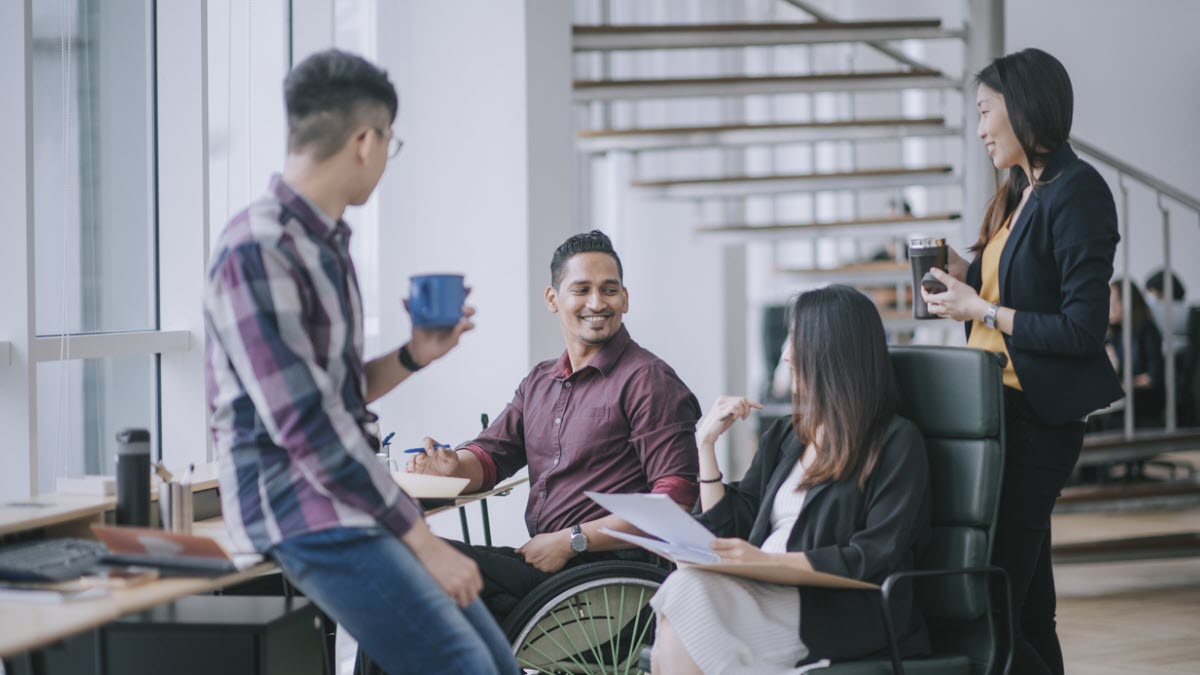Stories
‘Shifting the narrative’ around people with disabilities

U.S. Bank is working to create an inclusive workplace where all employees can thrive.
About one in four adult Americans live with a disability. While some disabilities are physical, others, like learning disabilities, autoimmune disorders or conditions impacting an individual’s daily life, are invisible.
For Brian Francisco, this hit home when his aunt disclosed that she had hidden her diagnosis of Parkinson’s disease, a brain disorder that causes uncontrollable movements, for many years. Even though the two are incredibly close, she was apprehensive about how her diagnosis would impact the family. Since then, he’s heard similar concerns about disclosing a disability echoed in conversations with other people.
“When I started working in the accessibility inclusion space a few years ago, the number of people who were afraid to disclose their disability was eye-opening,” said Francisco, a senior corporate trainer who sits on the board of the company’s Disability business resource group (BRG) as the accessibility director. “At the same time, it was heartbreaking for me to hear why they were afraid. That’s why I’m grateful that for our Disability BRG and support circles, which create safe spaces for employees to network and share resources.”
U.S. Bank is dedicated to enhancing inclusivity and creating a workplace where everyone can thrive and has been recognized for its efforts, including earning the highest score on the 2022 Disability Equality Index®. The Disability BRG plays a leading role in fostering equity and inclusion for individuals with disabilities, with members drafting the business case for creating a disability and accessibility consultant position to help ensure U.S. Bank has the infrastructure to support access and inclusion for employees who experience disability-related barriers in the workplace. The BRG’s managing committee sponsors approved the role, and in 2021, the company hired Emily Norenberg, who held a similar position at the University of Minnesota.
Creating this new position “really says a lot about the influence of the Disability BRG, and demonstrates the company’s willingness to listen to people with lived experiences who say, ‘hey, we need this,’ and then take action on it,” Norenberg said.
Since joining U.S. Bank, Norenberg has collaborated with Francisco and the Disability BRG to create a new Disability Awareness and Workplace Accessibility web-based training that reinforces the value employees with disabilities bring to U.S. Bank and offers practical ideas and resources for meaningfully supporting them. The course is required for managers and optional for all other employees. The training also links to a recently created “Disability Accessibility Playbook” that provides guidance for managers who receive an employee disclosure of a disability.
With more than 70,000 employees, the need for disability accessibility accommodations at U.S. Bank is vast. “Many of these accommodations often provide a better experience for all employees and customers,” said Kelly Risser, global chair of the Disability BRG and accessibility banking director. Just one example: adding closed captions to videos – originally designed to help people with hearing issues - can also be helpful for someone who is multitasking or doesn’t want to disturb people nearby.
“When our products aren’t accessible, or our systems aren’t accessible, we are, whether intentionally or not, preventing people from being able to independently use our services. No one wants to ask for an accommodation,” Risser said. “It creates a much stronger sense of belonging for our employees and customers to have accessibility built in.”
In 2018, U.S. Bank created a dedicated function within User Experience that allows teams to fully consider accessibility as part of the design process and was recognized by Forrester Research as one of 22 leading companies “getting it right – with a focus on how to progress by establishing a solid accessibility practice.”
While a foundation has been laid, for Norenberg, the work continues in collaboration with the Disability BRG and larger efforts like the new training course.
“A lot of the ways people think about disabilities are rooted in oppression. We’re trying to shift the narrative to think of disability as part of the human experience,” she said. “When we think about the sense of belonging that we hope to foster, how can we do that for our employees with disabilities? Because at the end of the day, one thing we all want is for people to feel empowered to do the work they were hired to do.”
Media center
Press contact information, latest news and more
Learn more
Company facts, history, leadership and more
Work for U.S. Bank
Explore job opportunities based on your skills and location